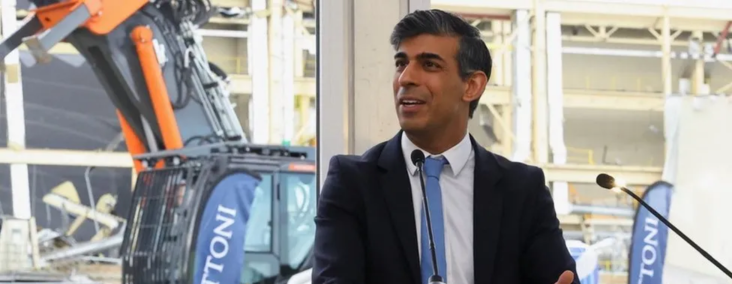Prime minister Rishi Sunak visited the former Honda site in Swindon this morning to officially break the ground on Panattoni’s £900 million logistics hub.
The development of Panattoni Park – a manufacturing and warehousing facility – is expected to create 7,000 direct jobs, with another 5,000 in the supply chain.
The redevelopment is happening at the former Honda manufacturing plant, which produced 3.7 million cars between 1985 at the factory’s closure in 2021.
The shock closure announcement had been made in 2019. Many had expected Honda to repurpose the factory to build electric cars. Instead, the manufacturer said its next generation of cars would be built in Japan.
The prime minster called the redevelopment “a huge vote of confidence in the UK,” noting that Swindon had “the transport connectivity that makes it an attractive place.”
Demolition of existing buildings on the 370-acre site is already underway. The Honda factory provided around 2.2 million sq ft of space, but Panattoni says its buildings will occupy closer to 5.5 million sq ft, using more of the potential of the site.
The full demolition programme is expected to take between a year and 18 months, but new buildings will be constructed as the site is cleared.
The complex is expected to be completed in around five years.
Paul Britton, CEO, Thames Valley Chamber of Commerce said “The Swindon community has a long history of building successful local supply chains and reinvention of the Honda site will provide new business and job opportunities long into the future”.
James Watson, head of development: Southern England & London at Panattoni UK, said: “The first phase of speculative development, which will commence later this year, will be circa 1 million sq ft.
“Discussions with global and UK businesses to locate in Swindon are well underway and we look forward to welcoming new ones with businesses to be part of this ground breaking development.”
Swindon Borough Council said the regeneration plans were “the largest commercial planning application ever submitted to the council.”
The site was at one time a World War Two airfield and aeroplane factory, manufacturing the iconic Spitfire fighter plane.

